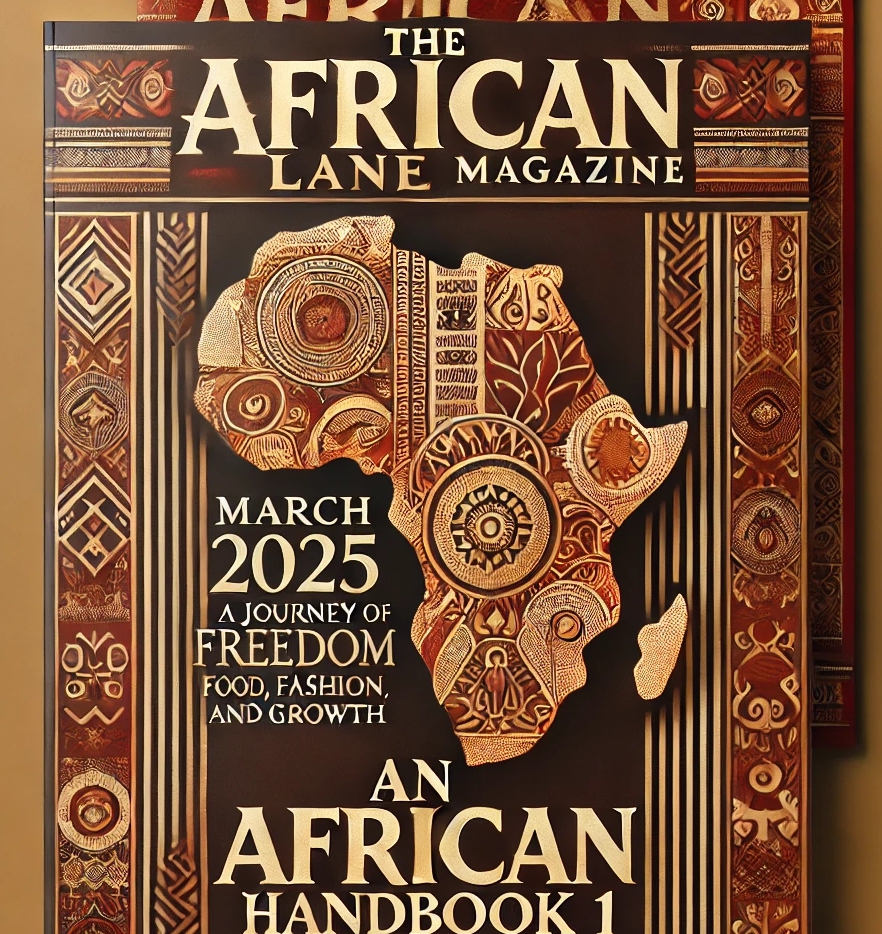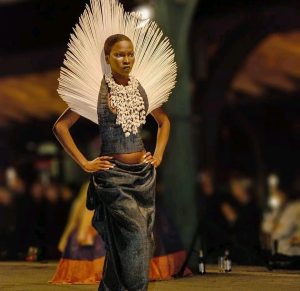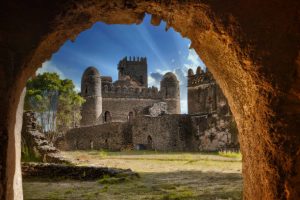Tanzania the Country of Freedom and Unity
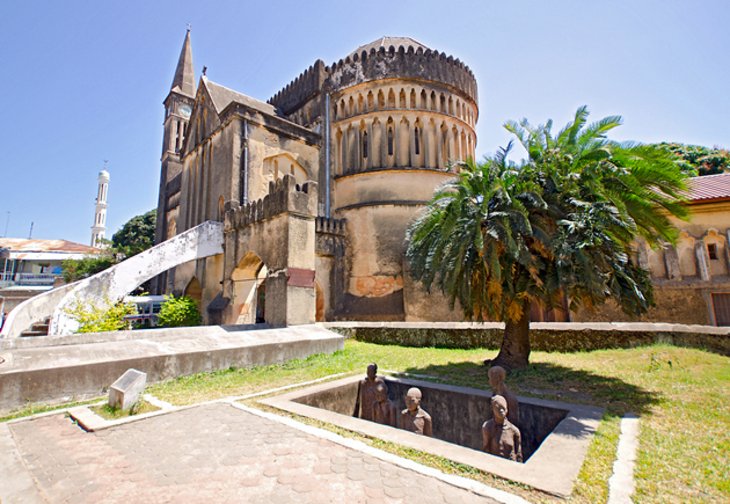
| Capital | Dodoma |
|---|---|
| Largest city | Dar es Salaam |
| Religion
(2020)[2]
|
|
| Government | Unitary dominant party presidential constitutional republic |
| • President | Samia Suluhu |
| • Vice-President | Philip Mpango |
| • Prime Minister | Kassim Majaliwa |
| • Speaker | Job Ndugai |
| • Chief Justice | Ibrahim Hamis Juma |
| Legislature | National Assembly |
| Independence from the United Kingdom | |
| • Tanganyika | 9 December 1961 |
| • Zanzibar and Pemba | 10 December 1963 |
| • Merger | 26 April 1964 |
| • Current constitution | 25 April 1977 |
ISO Country Code: tz, TZA
Time:
Local Time = UTC +3h
Actual Time: Fri-May-28 14:44
Country Calling Code: +255
Capital City:
Dar es Salaam (executive)
Dodoma (legislative)
Other Cities: Arusha, Mwanza, Mbeya, Mtwara, Stonetown, Zanzibar
Geography:
Location: Eastern Africa, bordering the Indian Ocean, between Kenya and Mozambique.
Area: Tanzania mainland: 945 000 km² (378 000 sq. mi.); Zanzibar: 1,658 km² (640 sq. mi.).
Terrain: Coastal plains; a central plateau; highlands in north and south.
Highest point: Kilimanjaro 5 895 m.
Climate: Varies from tropical to arid to temperate.
People:
Nationality: Tanzanian(s); Zanzibari(s).
Population: 50.1 million (2016) includ. Zanzibar.
Ethnic Groups: mainland – native African 99% (of which 95% are Bantu consisting of more than 130 tribes), other 1% (consisting of Asian, European, and Arab); Zanzibar – Arab, native African, mixed Arab and native African.
Religions: mainland – Christian 30%, Muslim 35%, indigenous beliefs 35%; Zanzibar – more than 99% Muslim.
Languages: Kiswahili (Swahili, Kiunguja), and English (both official), Arabic (widely spoken in Zanzibar), many local languages.
Literacy: male: 85.9%, female: 70.7% .
Natural resources: Hydropower, tin, phosphates, iron ore, coal, diamonds, gemstones, gold, natural gas, nickel.
Agriculture products: Coffee, sisal, tea, cotton, pyrethrum (organic insecticide), cashew nuts, tobacco, cassava (tapioca), bananas, fruits, vegetables; livestock.
Industries: Agricultural processing (sugar, beer, cigarettes, sisal twine); diamond, gold, and iron mining, oil refining.
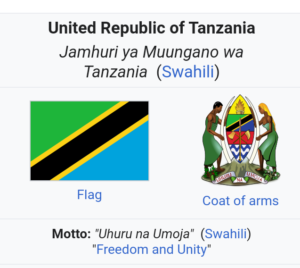
Exports – commodities: gold, coffee, cashew nuts, manufactures, cotton.
Exports partners: India 21.4%, China 8.1%, Japan 5.1%, Kenya 4.6%, Belgium 4.3% (2015)
Imports – commodities: consumer goods, machinery and transportation equipment, industrial raw materials, crude oil
Imports partners: China 34.6%, India 13.5%, South Africa 4.7%, UAE 4.4%, Kenya 4.1% (2015)
Currency: Tanzanian Shilling (TZS)
| Tanzania is located east of Africa’s Great Lakes north of Mozambique and south of Kenya, it has a coastline at the Indian Ocean in east. The nation is bordered by six other African countries: Burundi, the Democratic Republic of the Congo, Malawi, Rwanda, Uganda, and Zambia, it also shares maritime borders with the Comoros and the Seychelles. It has shorelines at three of the Great Lakes: Lake Victoria, Lake Tanganyika and Lake Nyassa (Lake Malawi).
The country occupies an area of 945,087 km², compared it is about three times the size of Italy or slightly larger than twice the size of California |

Culture
A slew of festivals go on throughout the year in Tanzania featuring traditional dress and dance, such as the Wanyambo Festival in Dar es Salaam and the Mwaka Kogwa Festival in Zanzibar. There are also periodic arts and film events, while objects of fascination can be picked up at markets nationwide.
The Tanzania culture is Swahili, an Arab/African mix, but there are also big Asian communities, particularly Indian, in towns and cities. Tribes inhabit rural areas, including the Maasai of the Great Rift Valley of the north. It is okay to photograph the locals, but always ask first. Some Maasai will charge you for this.
Zanzibar is predominantly Muslim so attention to dress is paramount and women should always keep knees and shoulders covered. Guides and cooks on safaris expect to be tipped, as do waiters in city restaurants (typically 10 percent). Tanzanians are big on shaking hands and small talk.
Food
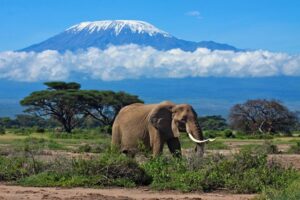
Facts about Tanzania
- Tanzania has the largest animal population density out of any country in the world. That is, there are more animals per square mile of land in Tanzania than in any other country.
- Tanzania is home to the famed Mt. Kilimanjaro, the tallest mountain in Africa, with its summit at 19,340 feet (5,895 meters).
- A little more than two of the U.S. state of California can fit within Tanzania, as it is the largest country in East Africa.
- Tanzania experiences some of the most luminescent moons in the world, often so bright that flashlights are not necessary for people to see at night.
- Tanzania is divided roughly into thirds between practitioners of folk religion, Christians, and Muslims (many of whom live on the Tanzanian island of Zanzibar). Currently, the largest religious denomination in Tanzania is Roman Catholic Christianity, followed by Protestant Christianity, Sunni Islam, and Shia Islam.
Image:
Stone Town is the cultural heart of Zanzibar and little has changed in the last 200 years. The grand old Arabian homes lining the narrow streets and winding alleys give the city its own unique charm. The majority of homes in Stone Town were built in the 19th C when Zanzibar was one of the most important Swahili trading towns in the Indian Ocean. Visitors will notice the bras-studded, intricately carved wooden doors on many of the houses.
Source: Wikipedia, Britannica, nationalOnline.org
